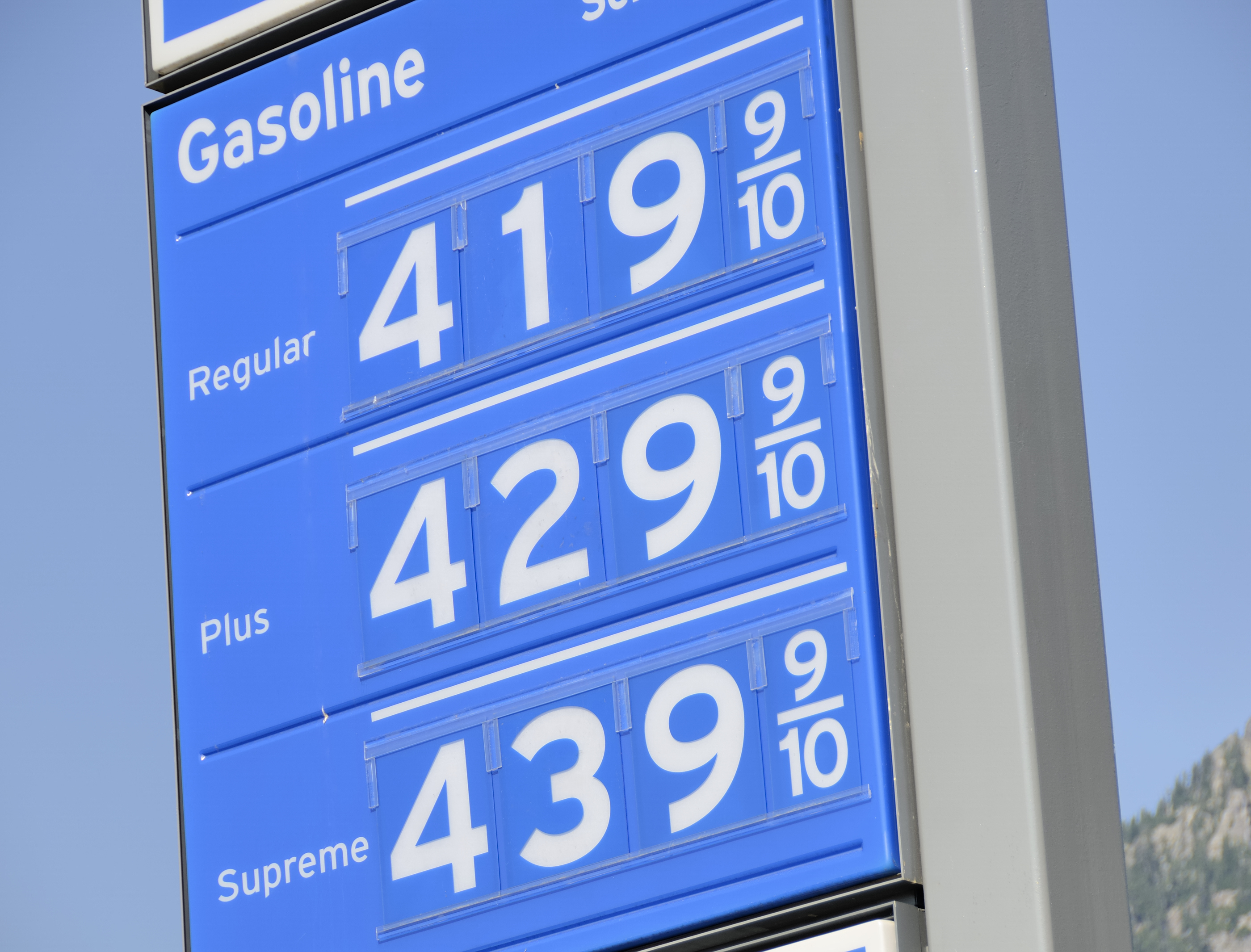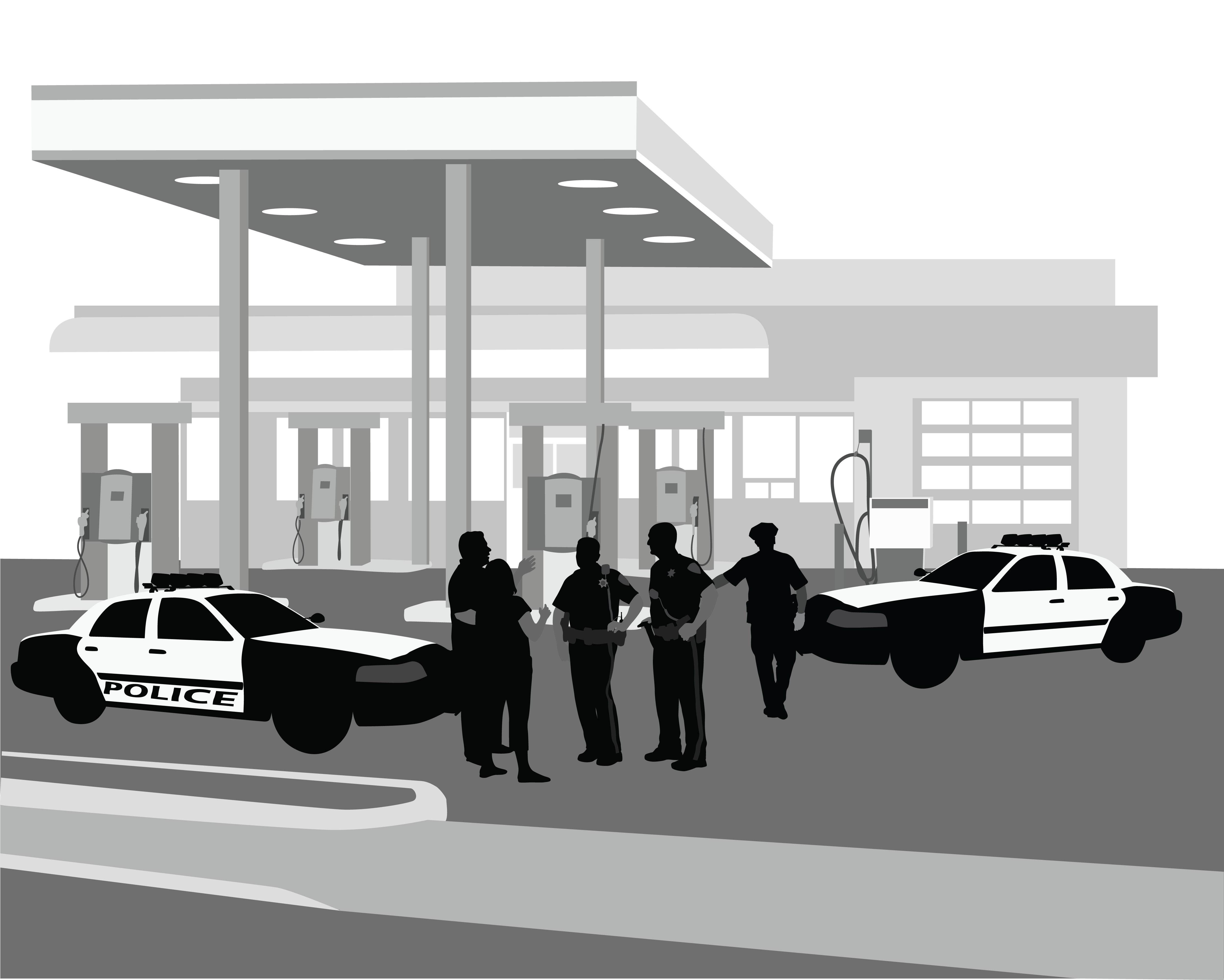Contact Us
To provide feedback on the Community Policing Dispatch, e-mail the editorial board at CPDispatch@usdoj.gov.
To obtain details on COPS Office programs, publications, and resources, contact the COPS Office Response Center at 800-421-6770 or AskCopsRC@usdoj.gov

U.S. Department of Justice
Office of Community Oriented Policing Services
Washington, DC 20530
Note: In light of the current spike in gasoline prices, the Dispatch Editorial Board is rerunning this article, which first appeared in Volume 1, Issue 5 of the Dispatch in May 2008. It has been slightly edited for clarity.
 As rising fuel costs put the squeeze on law enforcement department budgets, chiefs and sheriffs are searching for ways to sustain their current level of operations while using less gasoline. Some are finding their solutions in differential responses to calls for service, modified patrol methods, use of vehicles with improved gas mileage, or alternative fuels.
As rising fuel costs put the squeeze on law enforcement department budgets, chiefs and sheriffs are searching for ways to sustain their current level of operations while using less gasoline. Some are finding their solutions in differential responses to calls for service, modified patrol methods, use of vehicles with improved gas mileage, or alternative fuels.
With the average price of regular unleaded gasoline approaching $4.00 a gallon and no end to the increase in sight, law enforcement agencies across the country might not yet be feeling the pressure to drive less, but they certainly are taking notice of the impact on their budgets, especially as we head into the traditionally high-demand, price-increasing summer months. For those faced with the puzzle of how to meet the increasing demands on police services while minimizing fuel costs, there are no easy answers. Officers, particularly those who patrol and answer 911 calls, need cars, and cars need gasoline.
Our review of recent news coverage of higher fuel costs, as well as conversations with a variety of law enforcement officials, suggest a number of ways that agencies can mitigate the impact of gas prices on their budgets. This article strives to highlight some short-term as well as potential long-term solutions we found—an important consideration, because gas is unlikely to return to the lower prices enjoyed in the past.
 We were pleased to discover that many agencies were looking to community policing and problem solving to help them keep fuel consumption under control without the need to invest in new equipment or reduce police services. Chief Dan Flynn of the Marietta (Georgia) Police Department, for example, advocates the “use of a community policing, problem-solving approach” to develop strategies that reach reasonable goals in fuel reduction. He cautioned against reducing police patrols in response to rising fuel costs, believing that police visibility is vital to the community’s feelings of public safety and that there is a correlation between uniformed patrols and the absence of crime.
We were pleased to discover that many agencies were looking to community policing and problem solving to help them keep fuel consumption under control without the need to invest in new equipment or reduce police services. Chief Dan Flynn of the Marietta (Georgia) Police Department, for example, advocates the “use of a community policing, problem-solving approach” to develop strategies that reach reasonable goals in fuel reduction. He cautioned against reducing police patrols in response to rising fuel costs, believing that police visibility is vital to the community’s feelings of public safety and that there is a correlation between uniformed patrols and the absence of crime.
Some agencies have mandated or recommended caps on per-shift mileage. This may help with budgeting, but as the Eau Claire County (Wisconsin) Sheriff Ron Cramer has noted, in the 1980s deputies in his county were limited to 125 miles per shift, but that also limited effectiveness in a county with 630 square miles to patrol.1 A different approach to reducing mileage might be offered by technological advances in patrol cars. The Catawba (North Carolina) County Sheriff’s Office deputies have access to field-based reporting, allowing them to reduce the number of trips taken to headquarters. Deputies are also allowed to sign in from their cars in their assigned communities at the start of their shifts instead of gathering at headquarters for daily squad meetings.2 Both measures actually increase the law enforcement presence in the community while reducing the number of miles driven for administrative duties.
Other agencies have considered eliminating their take-home car programs or restricting off-duty mileage for take-home cars. As with per-shift mileage caps, this potentially reduces police visibility in the community because marked cruisers are driven less. Still others have instituted reimbursement programs for the use of take-home cars, with officers paying one rate for portal-to-portal use and another rate for off-duty personal use of the vehicles. An additional cautionary note is that changes in take-home car programs could have an adverse impact on morale. In some departments, the program may even be a job benefit that is subject to contract negotiations.
False Alarms
An excessive amount of patrol time and mileage is devoted to answering false burglar alarms. Between 94 and 98 percent of burglar alarm calls are false, and they account for 10 to 25 percent of all calls to police nationwide. Eliminating the need to respond to these calls can have a significant impact on fuel costs.4
Police in Olympia, Washington, were able to reduce the number of false alarms they responded to from 250 a month to an average of 54 per month by charging service fees for repeated false alarms.5 In December 2000, the Salt Lake City (Utah) Police Department determined that 12 percent of its patrol force was tied up handling false alarms each day. After instituting a false alarm reduction effort that involved not responding to alarms unless a security company employee, guard, or third party notifies the police that the alarm is valid, the false calls have been reduced by 90 percent.
The COPS Office Problem-Oriented Guide for Police No. 5, False Burglar Alarms, provides additional information and suggestions.
The unintended consequence of some fuel-saving solutions could be a reduction of police services, but what about saving fuel while also improving service and community interaction? The Hickory (North Carolina) Police Department is encouraging its officers to walk or ride bikes in their assigned communities. They are also encouraged to get out of their car for 10 minutes per hour on duty to do property checks on foot. Similarly, Claremont (North Carolina) Police officers are being encouraged to park their cars for 15 minutes every hour to do community networking and traffic patrolling.3 These sorts of policies are seen by some chiefs as having a positive side effect that encourages officer-citizen interaction and communication, something they have been striving for as they try to enhance their community policing efforts.
Alternative call-management strategies, many of which are discussed in the COPS Office guidebook Call Management and Community Policing, can also help agencies save on gas. Residents, for example, can be encouraged to use telephone reporting for minor property crimes, or to meet officers at substations to make reports. This would allow one officer to take many reports without having to drive from house to house.
The approaches to tackling this problem will likely be as varied as the nearly 18,000 state and local law enforcement agencies across the United States. No solution is going to work for all agencies, so perhaps the best advice we can offer is what we heard in one of our interviews—encourage agencies to use the problem-solving process they use to address crime and disorder problems. Why not turn the SARA process inward? Scan and Assess to identify the biggest fuel drains in your agency and the vehicle priorities. Identify and involve all stakeholders to develop and implement Responses that will reduce fuel use, acknowledging the geographic, technical, and possibly political realities of the agency. Take the time to Analyze how those responses have have not had an impact on the budget and on crime and the community. Then the agency can make policy adjustments that take into consideration not just the current price of fuel, but also the needs of the agency staff and the community they serve.
Rising fuel costs probably will affect policing for the foreseeable future. The need to find innovative ways to save on fuel costs while continuing to provide the level of service communities have come to expect is likely to remain a long-term challenge for police chiefs and sheriffs.
References
1. Rinzel, M. (2008, March 14). Gas Prices: Budget Breaker for Law Enforcement. WEAU TV 13.
2. Menster, J. (2008, March 16). Not Driving Not an Option for the Law. Hickory Daily Record..
3. Menster, J. Not Driving Not an Option. (See footnote 2).
4. Thornton, S. (2007, March 28). Battling False Alarms. Denver Post. http://www.denverpost.com/ci_5542196?source=rssdp.
5. Kamb, L. (2001, September 11). Burglar Alarms Cry Wolf—Police Cry Foul. Seattle Post-Intelligencer. https://www.seattlepi.com/seattlenews/article/Burglar-alarms-cry-wolf-police-cry-foul-1065374.php.
Karl Bickel
Senior Policy Analyst
COPS Office
Deborah Spence
Assistant Director
COPS Office
Subscribe to Email Updates
To sign up for monthly updates or to access your subscriber preferences, please enter your email address in the Subscribe box.






